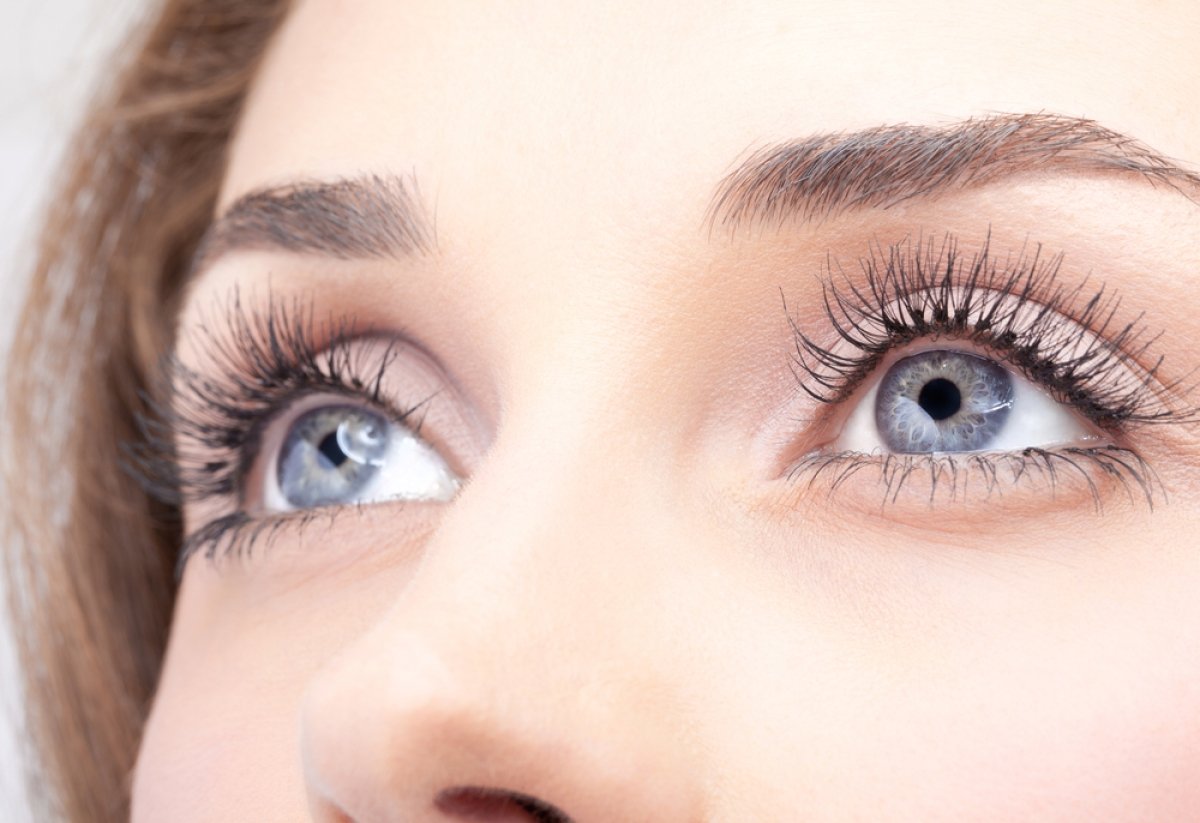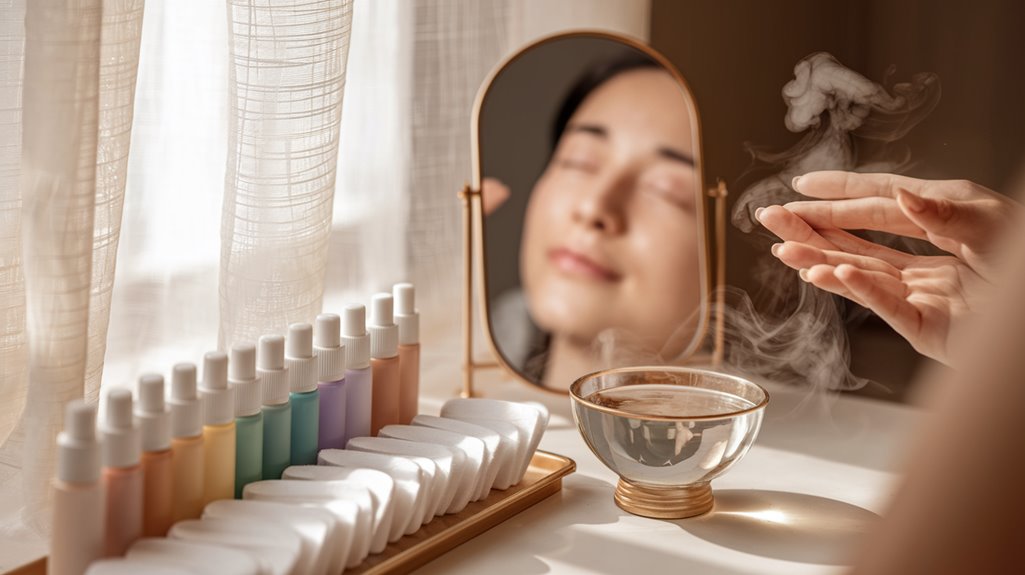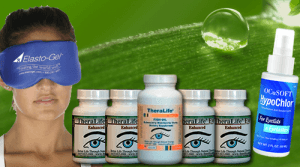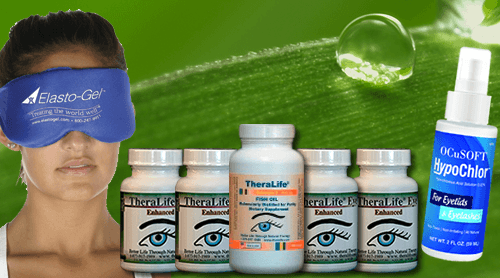Theralife.com’s products are designed to offer comprehensive support for maintaining healthy eyelids and blepharitis management effectively. By incorporating their solutions into your daily routine, you can benefit from evidence-based strategies that alleviate symptoms and promote eye health. Here’s how Theralife enhances your blepharitis management:
- Theralife Eye Enhanced: This product targets dry eyes, a common issue linked with blepharitis, by providing essential nutrients and reducing inflammation, thus improving overall eye comfort.
- Natural Ingredients: Theralife utilizes natural extracts known for their anti-inflammatory properties, helping soothe eyelid irritation and reduce redness.
- Comprehensive Eye Care: With a range of products tailored for various eye conditions, Theralife ensures you have access to holistic solutions that cater to your specific needs, whether it’s managing dry eyes, blepharitis, or related conditions like uveitis and Sjogren’s syndrome.
- Diet and Lifestyle Guidance: Theralife emphasizes the importance of an anti-inflammatory diet, rich in Omega-3s and hydration, to support eye health and mitigate blepharitis symptoms.
- Expert Consultation: Regular consultations with eye care professionals are recommended to tailor Theralife products to your unique requirements, ensuring optimal results.
- User-Friendly Products: The hypoallergenic formulations are designed to be gentle on sensitive eyes, reducing the risk of irritation from allergens or harsh chemicals.
- Ongoing Support: Theralife offers resources and advice on the best practices for eye hygiene and maintenance, enabling you to stay informed and proactive in your eye care regimen.
By choosing Theralife, you can confidently blepharitis management and other related eye conditions with a trusted, natural approach, ensuring your eyes remain healthy and comfortable every day.
Best Blepharitis Management From TheraLife
Add To CartKey Takeaways
- Maintain a daily eyelid cleansing routine with a non-irritating cleanser to remove debris and reduce infection risk.
- Apply warm compresses for 5-10 minutes daily to enhance meibomian gland function and ease symptoms.
- Perform gentle eyelid massages regularly to promote gland function and improve tear film stability.
- Use air purifiers and maintain indoor humidity to control allergens and prevent dry eyes.
- Consult an eye care professional for tailored treatment plans and regular monitoring.
Practice Good Eyelid Hygiene For Blepharitis Management
Maintaining good eyelid hygiene is essential in managing blepharitis effectively. Proper eyelid care prevents the accumulation of debris and bacteria, which are common culprits in inflammation.
To start, gently cleanse your eyelids using a mild, non-irritating cleanser. Diluted baby shampoo or commercial eyelid scrub pads are often recommended. With your eyes closed, use a clean cotton swab or pad to apply the solution, moving from the inner to outer corners. This hygiene practice should be performed daily to reduce symptoms like itching and redness. Hypochlorous acid solutions are effective against microbial agents, and specialized eyelid cleansers such as Avenova are effective against bacteria, making them a better choice than baby shampoo for managing blepharitis.
Incorporating these eyelid hygiene practices into your daily routine can greatly improve comfort and decrease flare-ups. Evidence suggests that consistent eyelid care diminishes bacterial load and debris, providing a foundation for healthier eyelids and preventing recurrent blepharitis episodes.
Use Warm Compresses Regularly For Blepharitis Management
Although often overlooked, using warm compresses regularly can greatly alleviate symptoms of blepharitis. The application of warmth helps to increase eyelid temperature, effectively loosening crusts and debris that accumulate along the eyelid margins.
By improving meibomian gland function, warm compresses can enhance lipid secretion, which in turn stabilizes the tear film. This simple method reduces inflammation and discomfort associated with blepharitis. Warm compresses are also effective for enhancing local circulation and drainage, which are essential for managing eyelid lesions and reducing inflammation.
Unlike cold compresses, which constrict blood vessels and can reduce swelling, warm compresses specifically target the underlying causes of blepharitis. To maximize benefits, use a clean, warm cloth and apply it to your closed eyelids for about 5-10 minutes daily.
Consistent use not only provides immediate relief but also supports long-term eyelid health.
Perform Gentle Eyelid Massage For Blepharitis Management
Incorporating a gentle eyelid massage into your daily routine can greatly enhance the benefits achieved through warm compresses. This practice plays an essential role in promoting eyelid health by improving meibomian gland function, reducing inflammation, and enhancing tear film stability. Perform the massage techniques using clean fingertips or a sterile cotton swab, applying light pressure along the eyelid margins. Start from the inner corner and move towards the outer edge, ensuring thorough coverage. This action facilitates the expression of blocked gland secretions, preventing stagnation. It’s important to conduct this massage consistently, yet gently, to avoid irritation. Evidence suggests that regular massages can alleviate blepharitis symptoms, fostering overall eyelid health and comfort. Tear film osmolarity serves as a diagnostic biomarker for dry eye severity, highlighting the importance of maintaining a stable tear film for ocular health. Always consult your eye care professional to personalize your approach.
Cleanse With a Mild Eyelid Cleanser For Blepharitis Management
To effectively manage blepharitis, using a mild eyelid cleanser is essential for maintaining eyelid hygiene and reducing inflammation. Regular cleansing removes debris and bacteria, lowering the risk of infection. An eyelid cleanser benefits by soothing irritation and promoting healing. When applying, use gentle cleanser application techniques to avoid further irritation. Dampen a clean cotton pad with the cleanser, then gently wipe from the inner to the outer corner of the eyelid. A pure hypochlorous acid based cleanser is particularly effective, as it mimics the body’s natural defense mechanism against pathogens.
| Eyelid Cleanser Benefits | Cleanser Application Techniques |
|---|---|
| Reduces bacteria | Use damp cotton pad |
| Soothes irritation | Wipe gently |
| Promotes healing | Clean inner to outer corner |
| Lowers infection risk | Avoid excessive pressure |
| Maintains hygiene | Use twice daily |
Maintain a Consistent Eye Care Routine- for Blepharitis Management
Maintaining a consistent eye care routine is essential for managing blepharitis effectively. You should incorporate daily lid cleaning, warm compress application, and gentle eyelid massage into your regimen to reduce inflammation and prevent flare-ups. Evidence supports these practices as they help dissolve crusts and blockages, promoting healthier eyelids and better symptom control. Consider using hypoallergenic and ophthalmologist-tested products to further protect sensitive eyes and maintain eyelid health.
Daily Lid Cleaning For Blepharitis Management
A consistent lid hygiene routine is essential for effectively managing blepharitis. By addressing eyelid inflammation through daily cleaning, you’ll reduce symptoms and improve comfort.
Start by choosing appropriate hygiene products designed specifically for sensitive eyelid skin. These may include lid scrubs or gentle wipes that help remove debris and bacteria without causing irritation.
When cleansing, use a clean cotton pad or swab to gently apply the product along the lid margin, ensuring you reach the base of the eyelashes where debris often accumulates.
Consistency is key—incorporate this practice into your daily routine, just like brushing your teeth. Regular lid cleaning not only minimizes inflammation but also prevents flare-ups, helping maintain ocular health and comfort over time.
A multifaceted approach is necessary for managing recurring blepharitis, as ongoing treatment and eyelid hygiene can prevent bacterial growth.
Warm Compress Application For Blepharitis Management
Applying warm compresses is a highly effective method for alleviating blepharitis symptoms, as it helps to loosen crusts and promote oil gland function. By maintaining eyelid temperature regulation, warm compresses encourage the secretion of oils, improving eyelid hygiene and comfort. To maximize benefits, aim for a consistent eye care routine, applying the compress for 5-10 minutes, twice daily. This routine not only aids in symptomatic relief but also reduces the frequency of flare-ups by ensuring proper oil flow in the meibomian glands. Regular assessment of chalazion size and color changes is crucial for evaluating treatment effectiveness. While cold compresses offer benefits like reducing inflammation and soothing irritation, warm compresses are specifically beneficial for blepharitis management.
Gentle Eyelid Massage For Blepharitis Management
Many find that incorporating a gentle eyelid massage into their daily routine considerably enhances the management of blepharitis. This practice not only improves eyelid circulation but also aids in the removal of debris and excess oil.
Employing effective massage techniques can greatly reduce inflammation and discomfort.
To maximize benefits, focus on:
- Circular Motions: Use your fingertips to apply gentle, circular motions along the eyelid margin to stimulate circulation.
- Lid Cleaning: Combine massage with a suitable eyelid cleanser to effectively remove irritants.
- Routine Consistency: Make it a daily habit to guarantee sustained relief and improved eyelid health.
Adding warm compresses to your routine can further enhance eyelid health by improving meibomian gland function and providing additional relief from symptoms.
Avoid Eye Makeup During Flare-Ups For Blepharitis Management
During blepharitis flare-ups, avoiding eye makeup is essential to minimize irritation risks. Research shows that cosmetics can exacerbate symptoms by blocking oil glands and trapping bacteria. Maintaining proper eyelid hygiene is crucial for managing blepharitis symptoms and preventing further complications.
Minimize Irritation Risks For Blepharitis Management
To effectively manage blepharitis and minimize irritation risks, it’s vital to avoid using eye makeup during flare-ups. This practice is significant for eyelid protection, as cosmetics can exacerbate inflammation and introduce additional irritants.
You should also be mindful of environmental factors that contribute to irritation. Pollution, wind, and dry air can worsen symptoms, so taking steps to shield your eyes is beneficial.
Consistent eyelid hygiene is essential to manage blepharitis effectively; regular cleaning helps reduce bacterial overgrowth and maintain eye health.
Here are some strategies to help minimize irritation:
- Use hypoallergenic products: If makeup is necessary, choose items designed for sensitive eyes.
- Maintain rigorous hygiene: Regularly clean makeup brushes and applicators to prevent bacterial buildup.
- Limit exposure to irritants: Wear sunglasses to reduce contact with wind and debris.
Promote Faster Healing For Blepharitis Management
Although managing blepharitis can be challenging, prioritizing actions that promote faster healing is essential. To achieve this, consider making lifestyle adjustments such as avoiding eye makeup during flare-ups. Eye makeup can trap bacteria and irritants, exacerbating inflammation and delaying recovery.
Instead, focus on natural remedies like warm compresses to soothe and cleanse your eyelids. This approach not only reduces symptoms but also supports the healing process by preventing further irritation.
Incorporate consistent eyelid hygiene practices by gently washing with a mild cleanser. This minimizes debris and oil buildup, vital for managing blepharitis effectively.
Monitor and Control Your Environment For Blepharitis Management
Managing your environment effectively can considerably alleviate the symptoms of blepharitis, as external factors often exacerbate this condition. By controlling environmental allergens and maintaining ideal indoor humidity, you can reduce the frequency and severity of flare-ups. Allergens such as dust mites and pollen are known irritants that contribute to inflammation.
Implementing strategies like using air purifiers and regularly cleaning your space can mitigate these triggers.
Additionally, indoor humidity levels should be maintained between 30-50% to prevent dry eyes, which can worsen blepharitis. Consider using a hygrometer to monitor your home’s humidity.
- Use air purifiers: Filter out allergens effectively.
- Regular cleaning: Minimize dust and allergen buildup.
- Monitor humidity levels: Prevent dry eye exacerbation.
Taking these steps guarantees a healthier environment for managing blepharitis.
Incorporate Omega-3 Fatty Acids Into Your Diet For Blepharitis Management
Incorporating Omega-3 fatty acids into your diet can considerably aid in managing blepharitis symptoms. These essential nutrients play a critical role in reducing inflammation and promoting eyelid health.
You can find omega-3 sources in foods like fatty fish (salmon, mackerel, sardines), flaxseeds, and walnuts. If it’s challenging to consume enough through diet alone, consider dietary supplements like fish oil or flaxseed oil capsules to guarantee adequate intake.
Clinical studies suggest that omega-3s enhance meibomian gland function, which is fundamental for maintaining the lipid layer of the tear film. By integrating these into your routine, you’re not just supporting overall eye health but also potentially alleviating the discomfort associated with blepharitis.
Always consult with a healthcare provider before starting any supplements.
Stay Hydrated and Maintain a Healthy Diet For Blepharitis Management
To effectively manage blepharitis, it’s essential you stay hydrated by drinking adequate water daily, as this helps maintain ideal tear production and eye surface health.
Incorporating nutrient-rich foods into your diet, such as leafy greens and whole grains, supports your body’s ability to reduce inflammation and promote eye health.
Drink Adequate Water For Blepharitis Management
Proper hydration is essential for maintaining overall eye health, including the management of blepharitis. Ensuring adequate water intake can help keep your eyelids healthy by promoting tear production and maintaining the integrity of the meibomian glands.
Staying hydrated offers several benefits:
- Hydration benefits: It reduces inflammation, supporting the eyelids’ natural defenses.
- Water intake: Enhances tear film stability, minimizing dryness and irritation.
- Reduced symptoms: Alleviates discomfort associated with blepharitis.
Aim for at least eight glasses of water daily, adjusting for your activity level and environmental conditions.
Remember, when your body is adequately hydrated, your eyes are better equipped to fend off blepharitis-related symptoms.
Prioritizing hydration is a simple yet effective strategy to enhance your eye health and manage blepharitis efficiently.
Consume Nutrient-Rich Foods For Blepharitis Management
While staying hydrated plays a significant role in managing blepharitis, consuming nutrient-rich foods also supports ideal eye health.
Prioritize a dietary balance by incorporating diverse nutrient sources, such as omega-3 fatty acids, vitamins A, C, and E, and zinc. Omega-3 fatty acids, found in fatty fish like salmon and flaxseeds, can reduce inflammation and support eyelid function.
Vitamins A, C, and E, present in carrots, oranges, and almonds, respectively, act as antioxidants, protecting ocular surfaces from oxidative stress. Zinc, available in lean meats and legumes, supports immune function, potentially reducing blepharitis flare-ups.
Consistently integrating these nutrients into your diet can fortify eye health and minimize symptoms. Remember, a well-rounded diet complements hydration to optimize eyelid maintenance.
Best Blepharitis Management From TheraLife
Add To CartConsult an Eye Care Professional for Guidance For Blepharitis Management
Even though self-treatment options for blepharitis are available, consulting an eye care professional remains essential for effective management.
Professional consultations offer tailored eye care education, ensuring you understand your specific condition and its management. An eye care professional can accurately diagnose the type of blepharitis you have, which is vital since different types require unique treatments.
By seeking expert guidance, you benefit from:
- Customized Treatment Plans: Tailored to your specific condition and needs.
- Advanced Diagnostic Tools: Access to cutting-edge technology for a precise diagnosis.
- Ongoing Monitoring: Regular check-ups to monitor progress and adjust treatments as necessary.
Your eye health is too important to leave to chance. Trust an expert to guide your blepharitis management effectively and keep your eyelids healthy every day.
Best Blepharitis Management From TheraLife
Add To CartFrequently Asked Questions
Can Stress Exacerbate Blepharitis Symptoms?
Yes, stress can worsen blepharitis symptoms.
When you’re stressed, your body’s inflammatory response may increase, potentially aggravating eyelid inflammation. Effective stress management is essential for maintaining emotional health and mitigating this impact.
Techniques like mindfulness, exercise, or therapy can help reduce stress levels. Evidence suggests that managing stress not only benefits overall well-being but also plays a role in keeping blepharitis symptoms under control, ensuring healthier eyelids.
How Does Screen Time Affect Blepharitis?
Screen glare and excessive screen time can feel like a relentless assault on your eyes, making blepharitis symptoms worse.
You’re not just imagining it—prolonged exposure leads to eye strain, exacerbating inflammation and irritation.
Evidence suggests that reducing screen time and taking regular breaks can greatly improve comfort.
Try practicing the 20-20-20 rule: every 20 minutes, look at something 20 feet away for 20 seconds to help your eyes relax.
Are There Specific Foods to Avoid With Blepharitis?
When managing blepharitis, you should consider dietary modifications for inflammation reduction. Avoid foods high in trans fats, sugar, and refined carbohydrates, as they can exacerbate inflammation.
Instead, focus on anti-inflammatory foods like omega-3-rich fish, leafy greens, and nuts. Evidence suggests these choices may alleviate symptoms by reducing inflammatory markers.
Stay patient-focused, monitoring your dietary changes to assess their impact on your blepharitis. Consult with a healthcare provider for personalized guidance.
What Natural Remedies Can Help With Blepharitis?
To manage blepharitis naturally, you can use herbal compresses and essential oils.
Herbal compresses with chamomile or green tea have anti-inflammatory properties that can soothe your eyelids.
Essential oils like tea tree oil, when diluted properly, can help reduce bacterial buildup.
Always verify you’re using sterile materials and consult with your healthcare provider to tailor treatments to your specific needs, guaranteeing safety and efficacy in your blepharitis management.
Can Allergies Trigger a Blepharitis Flare-Up?
Oh, the joys of allergies! Just when you think sneezing’s your biggest problem, allergy symptoms can surprise you by triggering eyelid inflammation.
Yes, allergies can indeed provoke a blepharitis flare-up, adding to your discomfort. Studies show allergens cause inflammation, leading to itchiness and redness.
Keep an eye on your environment and manage allergens effectively to minimize these pesky flare-ups.
Prioritize your eyelid health to maintain comfort and prevent recurrence.
Best Blepharitis Management From TheraLife
Add To CartConclusion
To ensure your blepharitis is well-managed, consider incorporating TheraLife’s products into your daily routine. TheraLife offers a range of solutions that promote eye health and address the root causes of blepharitis. Their natural formulations support eyelid hygiene and help alleviate symptoms like crusty eyes, recurrent chalazions, and dry eyes. By choosing TheraLife, you’re taking a proactive step in reducing inflammation and improving your overall eye comfort. For personalized guidance, consulting with an eye care professional is recommended. With TheraLife, your efforts towards achieving healthy, comfortable eyes are supported by science and nature.





